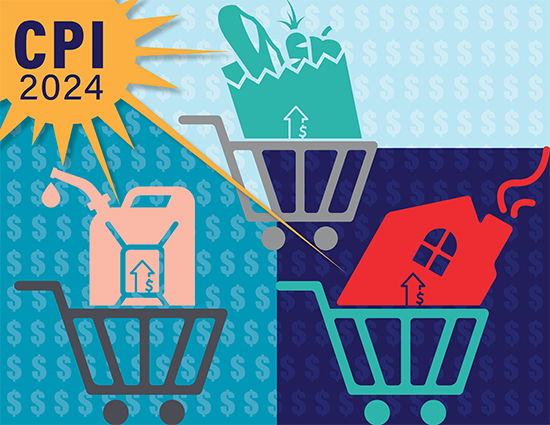An official website of the United States government
 United States Department of Labor
United States Department of Labor
 PRICES & SPENDING • Aug 2025 • Volume 14 / Number 7
PRICES & SPENDING • Aug 2025 • Volume 14 / Number 7

Between December 2023 and December 2024, consumer prices experienced disinflation, where prices still increased but by a smaller amount than before. The Consumer Price Index (CPI) increased 2.9 percent from December 2023 to December 2024. This was a slower rate of increase than in the three previous 12-month periods ending in December.
Read full article » Recent articles
Recent articles
Analyzing data for STEM occupations can be challenging because many definitions of STEM exist, and different definitions may be better for different purposes. The variety of definitions can make it more difficult for data users to understand what a particular STEM dataset represents, compare STEM data from different sources, or determine how well a given STEM dataset meets the data user’s needs. This Beyond the Numbers (BTN) article provides research and analysis of STEM occupations by presenting employment and wage data for different definitions of STEM, based on options for defining STEM developed by the interagency SOCPC. This article uses a special tabulation of May 2023 OEWS data to look at national STEM employment and wages for alternate SOCPC definitions.
This Beyond the Numbers article uses data from the Current Population Survey (CPS) and the American Time Use Survey (ATUS) to provide insights into the labor force participation and activities of older individuals.
This Beyond the Numbers article will examine the price movement of steel in three phases: March 2020–August 2020, when the pandemic shock set in and steel prices fell; September 2020–December 2021, when the economy began to rebuild and steel prices surged; and January 2022–May 2023, when economic activity expanded but steel prices generally moved lower.